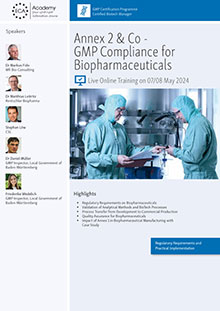FDA Advancing Regulatory Sciences: Data on Posttransfusion Purpura (PTP)

Recommendation
7/8 May 2024
Regulatory Requirements and Practical Implementation
On 28 March, the FDA published several data on occurrence & risk factors for potentially fatal bleeding disorder called posttransfusion purpura (PTP) among the U.S. elderly patients. Scientists from FDA, Silver Spring, Maryland, Acumen LLC, Burlingame, California, and and Centers for Medicare & Medicaid Services, Baltimore, Maryland evaluated the information and facts on PTP as recorded in large Medicare databases during 2011 through 2012.
In their study, they summarized the findings of that OBE study as follows:
- 78 patients had a PTP diagnosis recorded among 4,336,338 inpatient transfusion stays for elderly during the study period (1.8 per 100,000 stays)
- Transfusion with platelets, either alone or in combination with red blood cells and/or plasma, substantially increased PTP risk among elderly patients
- Higher risk of PTP occurrence with increasing number of blood units transfused, especially among older elderly ages 80 and above
Significantly increased risk for PTP in patients with 2012 histories of cardiac arrhythmias, leukemia, and transplantation of organs, tissues, or stem cells - Evidence for increased risk of PTP with certain medical history:
- blood transfusion(s)
- antiarrhythmic medication(s) use
heparin-induced thrombocytopenia while controlling for potential confounders
- younger elderly women (65-79 years of age) as compared to younger elderly males
To get mor details please see "Occurrence & risk factors for potentially fatal bleeding disorder called posttransfusion purpura (PTP) among the U.S. elderly patients"
Related GMP News
21/02/2024
GMP Conferences by Topics
- General Quality Assurance and GMP Compliance Topics
- Hygiene
- General Microbiology Topics
- Regulatory Affairs
- Development
- General Analytics Topics
- Good Distribution Practice
- Sterile Manufacturing
- Computer Validation
- General Qualification/Validation Topics
- General Engineering Topics
- APIs/Excipients
- GMP Basic Training Courses
- Medical Devices and Combination Products
- Packaging and Packaging Material
- Data Integrity
- Qualified Person (QP)
- GMP Auditing
- Documentation
- Cleaning Validation
- General IT Compliance Topics
- Impurities
- OOS / OOE / OOT
- Material Testing
- Validation of Analytical Methods
- Analytical Instrument Qualification
- Stability Testing
- Microbiological Testing
- Technology
- General Manufacturing Topics
- Solid Dosage Forms/Semi-Solid Dosage Forms
- Biotechnology/Blood/ATMP
- Herbal Drug Products/Cannabis/Radiopharmaceuticals
- Others




